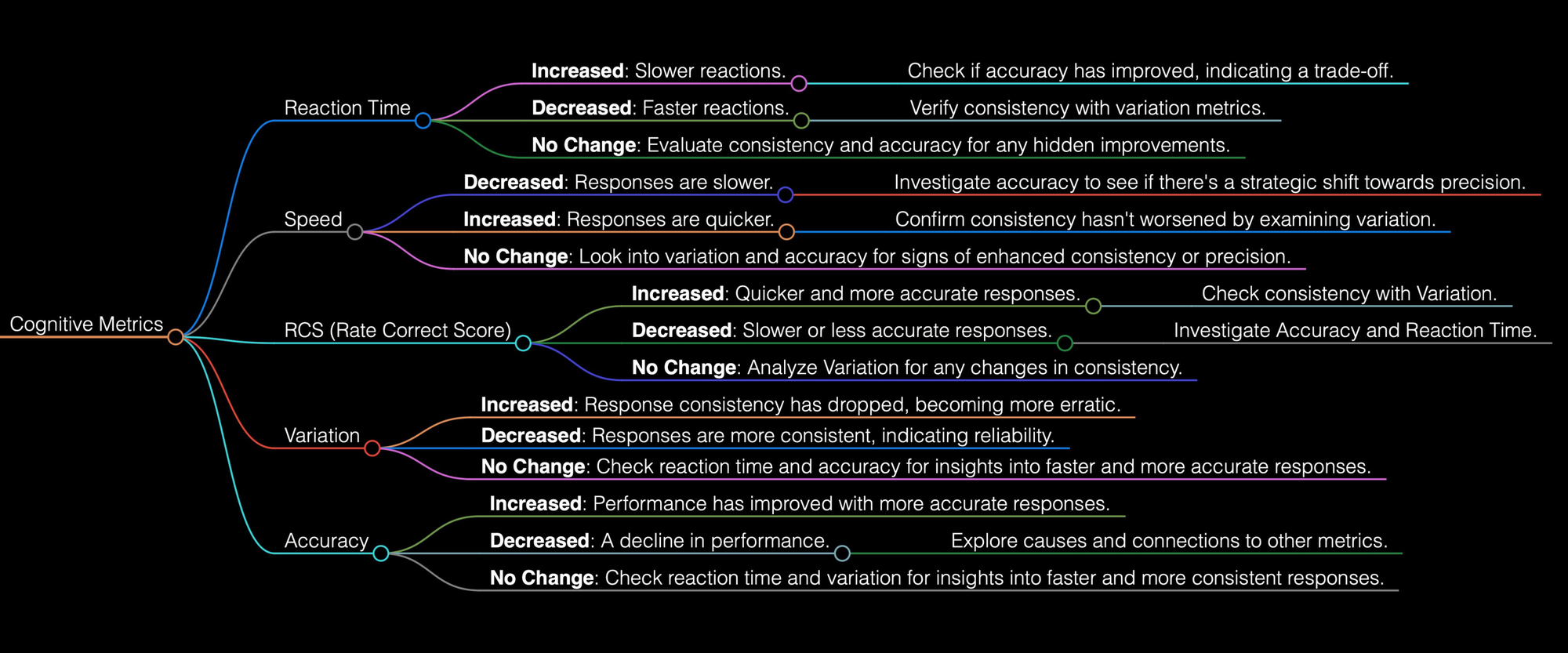Deciphering RCS: The Interplay of Speed and Accuracy
This metric provides a comprehensive view by balancing the speed and accuracy of an athlete's responses.

For RCS, or Rate Correct Score, consider it the gold standard for gauging an athlete's performance efficiency. This metric provides a comprehensive view by balancing the speed and accuracy of an athlete's responses. When we observe an increase in RCS, it signals a significant improvement—it means that the athlete is not merely reacting faster, but also with greater precision. Such enhancements suggest an optimal adjustment in training techniques or a successful adaptation by the athlete.
Now, let's move on to how to interpret RCS data.

Increased RCS
When RCS shows an increase, it typically indicates improved speed and accuracy, suggesting that the athlete is responding more effectively. However, if this increase in RCS is accompanied by increased variability, it may point to inconsistencies in performance. While the athlete might demonstrate peak performance in some situations, increased variability suggests that these improvements are not uniformly applied across different conditions or times. This inconsistency can undermine the true value of the gains in speed and accuracy, indicating a need for more focused training to stabilize performance.
Decreased RCS
A decrease in RCS requires a detailed analysis of the underlying factors contributing to this drop. This decline could reflect a deliberate strategy by the athlete to slow down in order to increase accuracy, especially in tasks where precision is more critical than speed. Alternatively, it might signal issues such as fatigue, loss of focus, or a regression in technique. In such cases, it is crucial to reassess the training and recovery processes to address any adverse impacts and to fine-tune the balance between speed, accuracy, and reaction time to restore or enhance performance levels.
No Change in RCS
When RCS remains stable, and variability decreases, this combination is generally positive, indicating a successful optimization of performance consistency. Stability in RCS, alongside reduced variability, shows that the athlete is not only maintaining their level of performance but doing so more uniformly across different scenarios. This consistent performance is highly advantageous, as it suggests that the athlete has adapted to maintain their skills under varying pressures and can reliably meet performance standards. For coaches, this scenario is ideal, as it points to a well-rounded athlete who has likely achieved a balance in training that supports sustained high-level performance without fluctuations.
By closely monitoring RCS and variability, coaches and athletes can better understand the effectiveness of their training strategies and make informed decisions to adjust their methods for optimal results. This analysis is crucial for developing athletes who can consistently perform at their best, regardless of varying competitive conditions.
🌐 Connect With Us
🌍 Soma Technologies: Engineered to enhance human performance.
📸 Instagram: Dive into our world through exclusive photos and stories.
👥 Facebook: Join our community for the latest updates and discussions.
📈 LinkedIn: Connect with us professionally and stay informed about industry news.
🎥 YouTube: Watch our latest videos, tutorials.
🐦 X: Follow us for instant updates, news, and engaging tweets.
